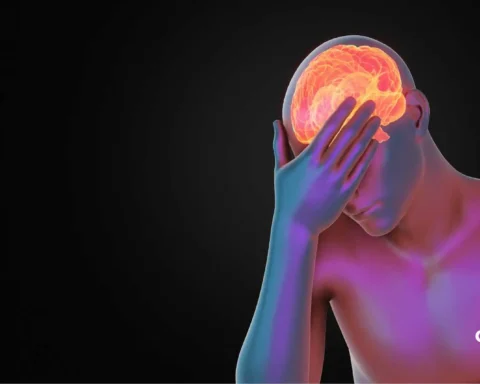Acute Parkinsonism, the second most prevalent age-related degenerative brain condition after Alzheimer’s disease, is a rare neurological disorder that can cause sudden and severe symptoms. Seen primarily among older populations, experts find this motor brain ailment impacting a minimum of 1% of individuals aged 60 and above globally. However, all ages above seventeen are susceptible to certain kinds of Parkinsonism, and one must watch out for crucial signs of its early development to strategically and effectively counter it.
Stay with us on this blog as we delve into the complexities of acute Parkinsonism and shed light on the often-overlooked symptoms of movement disorder.
Listen To This Podcast: Fighting the Stigma around Parkinson’s with Sanjeev Dixit
Table of Contents
What is Parkinsonism?
Parkinsonism serves as a broad umbrella term for disorders that share similar movement-related symptoms like slowed movements, stiffness (rigidity), and tremors. Additional symptoms due to individual-specific conditions may also occur. These conditions can arise from a multitude of factors, including genetic mutations, adverse reactions to medications, brain injuries and infections.
While many of these disorders entail lifelong challenges and may involve progressive brain deterioration, most of them are manageable with treatment and proper care.
How is Acute Parkinsonism Different from Parkinson’s Disease?
Parkinsonism is an umbrella term used to describe several conditions that share similar symptoms and features with Parkinson’s disease. However, Parkinson’s disease accounts for about 80% of all cases of Parkinsonism, making it the most commonly occurring by far.
Acute Parkinsonism or rapid-onset dystonia Parkinsonism refers to a sudden emergence of symptoms of dystonia, which involves involuntary and persistent muscle contractions, typically within hours to days. Rapid-onset Dystonia parkinsonism leads to movement difficulties that interfere with walking, speaking, and performing daily tasks.
This disorder primarily affects the arms and legs, causing muscle cramps and spasms. Facial muscles are commonly impacted, leading to difficulties in speech and swallowing. Symptoms typically start at the upper part of the body and progress downward, initially affecting facial muscles, then arms, and finally legs.
Other conditions that fall under the term parkinsonism include multiple system atrophy, corticobasal degeneration, drug-induced Parkinsonism and vascular Parkinsonism. Unlike Parkinson’s disease, acute Parkinsonism can arise from causes that are treatable or even curable, and some of them can also gradually fade on their own with the correct treatment for symptoms.
Causes of Parkinsonism
Genetic Mutations
Research has found that Parkinsonian symptoms stem from mutations in the ATP1A3 gene, which modify the protein-coding sequence of what is called the sodium pump. This protein plays a vital role in the normal function of brain nerve cells (neurons) by regulating the movement of charged atoms (ions) in and out of neurons. When mutations occur in the ATP1A3 gene, they diminish the activity of the protein by making it unstable.
Consequently, the defective protein fails to transport ions effectively, disrupting the electrical activity in brain neurons. However, the precise mechanism through which this malfunctioning protein leads to the movement abnormalities of acute onset parkinsonism remains unclear.
In some individuals affected by acute-onset Parkinsonism, however, no mutation in the ATP1A3 gene has been identified. The genetic origin of the disorder remains a mystery in these cases. Researchers suspect that mutations in a different unidentified gene may also contribute to the development of this disorder.
Reaction to Medication
Parkinsonism has been frequently attributed to drug side effects, primarily neuroleptic malignant syndrome, a potentially life-threatening reaction to antipsychotic drugs (dopaminergic medications/dopamine-blocking medication) used in the treatment of schizophrenia, bipolar disorder, and other mental health disorders. When induced by medication, this disorder is often referred to as Secondary Parkinsonism, with symptoms including fever, altered mental status, muscle rigidity, and autonomic dysfunction (dysautonomia).
Infections
Encephalitis, or inflammation of the brain, can instigate Parkinsonism through viral infections and immune responses, resulting in a range of symptoms of neurological disorders. In particular, Von Economo’s disease and viral infections, like Epstein-Barr virus (EBV) and SARS-CoV-2, have been found to induce Parkinsonism.
Von Economo’s disease, occurring mainly from 1919 to 1926, often led to delayed Parkinsonian syndrome, even in those who hadn’t experienced prior encephalitis symptoms. Similarly, EBV encephalitis has been linked to symptoms like rigidity, tremor, and apraxia (inability to make voluntary movements). SARS-CoV-2-related encephalitis can also cause prominent Parkinsonism, resembling acute encephalitis lethargica (sleeping sickness), with both motor and non-motor symptoms.
Vascular/Structural Abnormalities
Abnormalities of the skin and tissues, like lesions and tumours, can lead to Vascular Parkinsonism (VP), often caused by small strokes or vessel disease affecting brain areas that control motor functions. Its symptoms include lower-body Parkinsonism, postural instability, and a poor response to typical Parkinson’s medications. Diagnosis relies on magnetic resonance imaging to distinguish it from other forms of Parkinsonism.
The treatment for Vascular Parkinsonism relies on the management of vascular risk factors like hypertension and high cholesterol. Lifestyle changes like exercise and healthy dietary habits may help slow its progression.
Psychiatric Manifestations
Conversion Disorder
Conversion disorder can cause what is known as psychogenic Parkinsonism, which has common Parkinsonian symptoms like tremors, rigidity, and slow movements. However, clinical examination is vital for diagnosis as symptoms may suddenly appear, not progress, and vary over time. In psychogenic Parkinsonism, symptoms may have a sudden onset, a non-progressive course, varying over time.
Additionally, movements may not be consistent and can disappear with distraction. Movements may also be inconsistent and can vanish with distraction. The treatment for psychogenic Parkinsonism is often complex and involves a multidisciplinary approach that includes psychological interventions, physical therapy, and counselling.
Catatonia
Although not a direct cause, catatonia, a psychomotor syndrome, has symptoms overlapping with those of Parkinsonism, especially that of akinesia, which entails stupor, mutism, rigidity, and posturing, often accompanied by acute onset and mood changes. Distinguishing between catatonia and Parkinson’s disease (PD), particularly the akinetic type, can be challenging due to overlapping symptoms. In severe PD cases, catatonia is often missed.
Acute akinesia, a rare PD complication, resembles catatonia and can occur due to various triggers like infections or surgery. It manifests in a sudden decline in motor function, persisting for over 48 hours despite treatment, with increased body temperature and muscle damage markers. This 2022 study discusses the differential bases and approaches to the treatment of both diseases.
What are the Early Symptoms of Acute Parkinsonism?
The symptoms of Acute Parkinsonism typically develop during adolescence or early adulthood, with its age of onset being around 17. Individuals may experience clinical manifestations triggered by factors like infection, physical exertion, emotional stress, or alcohol consumption. While symptoms often stabilize within a month, there is usually little improvement henceforward. In some cases, there may be a sudden worsening of symptoms during a subsequent episode occurring several years later.
Some key motor symptoms of Parkinsonism or rapid-onset Parkinsonism include the following:
- Bradykinesia (slow movements)
- Dyskinesias or involuntary movements (tics, spasms, tremors, shaking)
- Stiffness or rigidity
- Unnatural (flexed, hunched, or stooped) posture
- Postural instability while walking
- Freezing of gait (difficulty moving while attempting to walk)
Additionally, non-motor symptoms of cognitive and neuropsychiatric issues may also be detected in individuals with rapid-onset Parkinsonism:
- cognitive impairment (varying alertness and concentration)
- impulse control disorders
- visual hallucinations
- confusional state
- rapid eye movement
- sleep disorder, excessive somnolence
- Orthostatic hypotension (lightheadedness upon standing up)
- social phobias, depression, anxiety
- seizures
These psychiatric symptoms and cognitive dysfunctions, in cases of acute Parkinsonism, have a much faster rate of progression than in those of Parkinson’s disease.
Listen To This Podcast: Fighting the Stigma around Parkinson’s with Sanjeev Dixit
Conclusion
Acute Parkinsonism can be a challenging condition to diagnose due to its sudden onset and varying and often vague causes. As medical research continues to strive for better knowledge of this disease, its causes and treatment, it is also important that we keep ourselves aware of some of its early signs – motor, neurological and psychotic symptoms – which may manifest rapidly in a matter of weeks. Vigilance and awareness on the patient’s part enable early identification and timely management by healthcare providers, allowing them means of effective intervention and support to patients with Parkinsonism.
FAQs
What are the 4 features of Parkinsonism?
Rest tremors, bradykinesia (slow, hesitant movement), rigidity, and impaired postural reflexes are typically regarded as the primary features and indicators of Parkinson’s disease (PD). These characteristic features and their particular presentation are vital in distinguishing PD from other Parkinsonian conditions.
What is Parkinsonism and its symptoms?
Parkinson’s disease is a progressive neurological condition that impacts parts of the nervous system that govern motor functions and movement. Symptoms typically develop gradually, often beginning with a slight tremor in one hand and may deteriorate progressively into stiffness, posture and balance issues or decreased movement speed.
What is the main cause of Parkinsonism?
Parkinson’s disease stems from the depletion of nerve cells in the substantia nigra region of the brain, responsible for producing dopamine, a crucial neurotransmitter for coordinating body movements. The decrease in dopamine levels disrupts neural communication, resulting in slowed and abnormal movements. While the precise cause remains unclear, research suggests a combination of genetic, medical and environmental factors contributes to the development of Parkinson’s disease.










[…] You Might Be Interested In: Acute Parkinsonism: 5 Early Warning Signs You Shouldn’t Ignore […]
[…] ALSO READ: Acute Parkinsonism: 5 Early Warning Signs You Shouldn’t Ignore […]
[…] You Might Be Interested In: Acute Parkinsonism: 5 Early Warning Signs You Shouldn’t Ignore […]
[…] symptoms of Parkinson's disease can be potentially reduced with light therapy […]
[…] Palsy (CP) and Parkinson's Disease (PD) are both neurological conditions that can significantly impact an individual's movement and […]